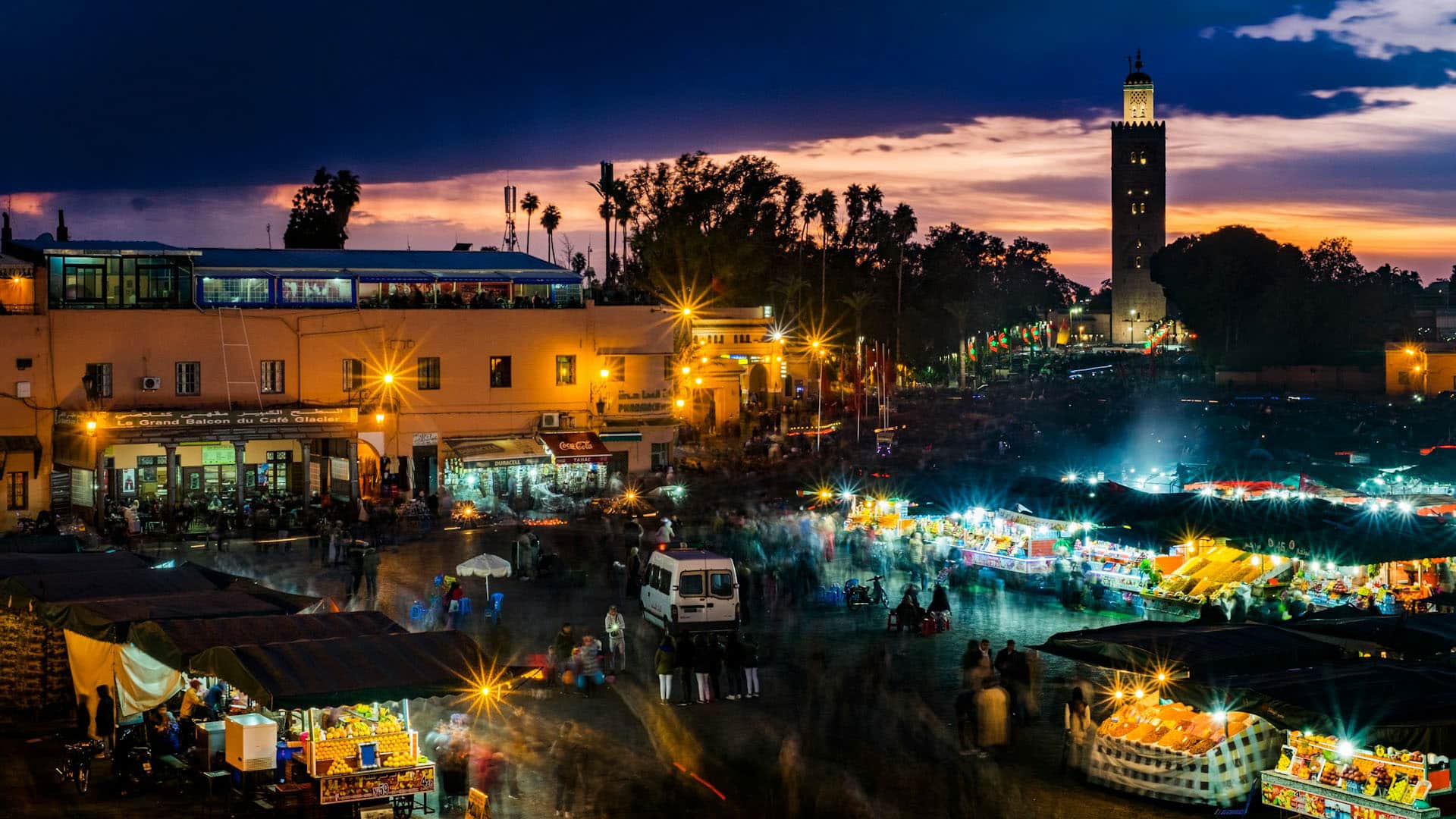
Famous Djemaa El Fna Square in Marrakech / Credit: Zoltan Tasi
Morocco is a fascinating country with diverse experiences, from its imperial cities to the Sahara Desert. The four imperial cities – Fes, Marrakech, Meknes, and Rabat – each offer their own special treasures, that capture the beautiful spiritual, cultural, and political richness of Moroccan life. Beyond the imperial cities, you’ll find some incredible destinations, like the blue streets of Chefchaouen and the stunning vistas of the Sahara Desert. From the fascinating ancient ruins of Volubilis to the coastal charm of Essaouira, Morocco truly showcases its rich history and breathtaking landscapes.
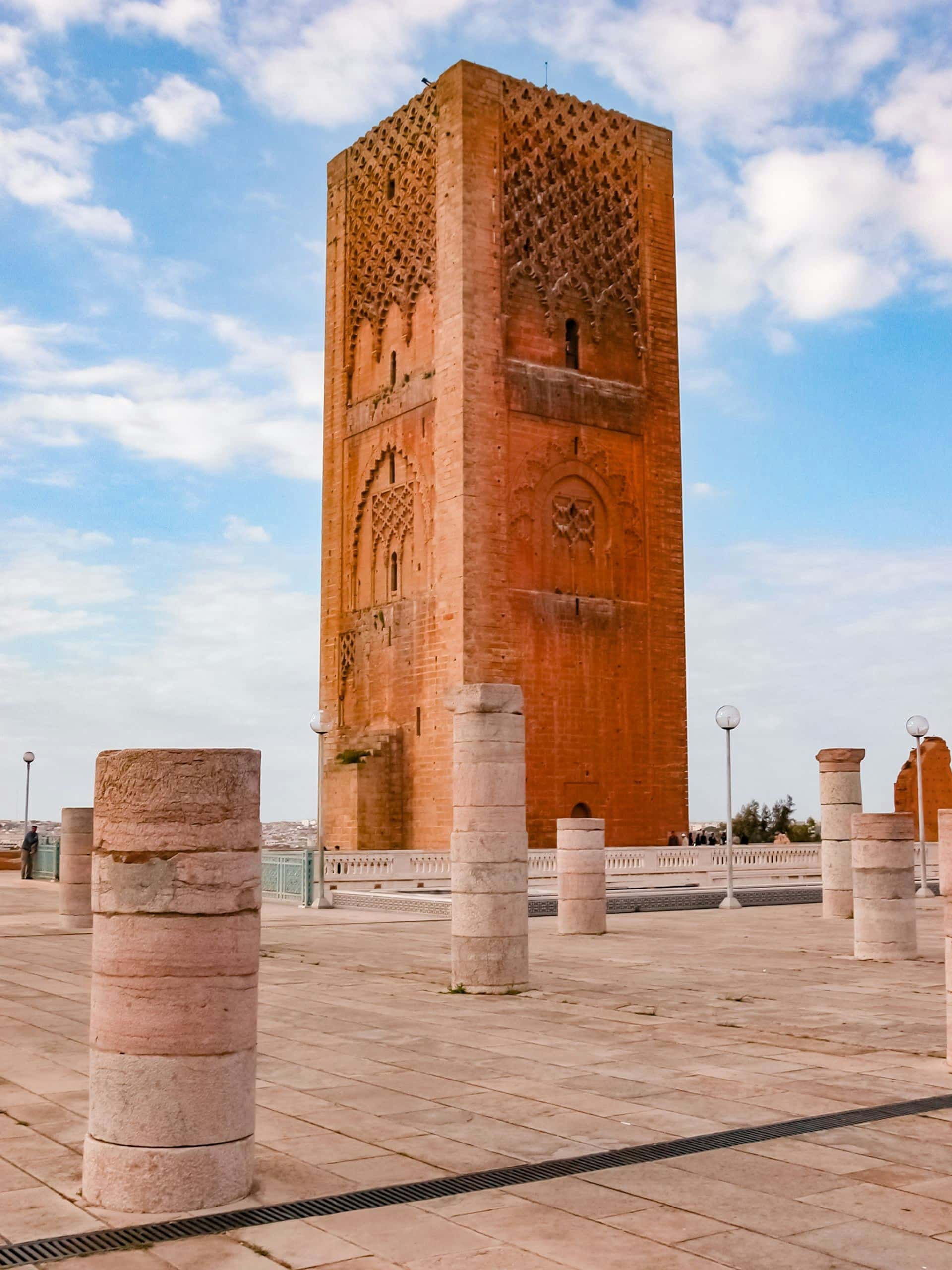
Hassan Tower in Rabat is a 44-metre minaret from the 12th century

Chouara Tannery in Fes, founded in the 11th century, is still in operation / Credit: Toni
The Four Imperial Cities
Fes: The Cultural Heart
Known as the spiritual capital of Morocco, Fes houses one of the largest car-free zones globally. Its ancient medina, Fes el-Bali, is recognized as a UNESCO World Heritage site, characterized by winding alleyways, bustling souks, and exquisite Islamic architecture. Established in the 9th century, Al Quaraouiyine holds the title of the world’s oldest university, symbolizing the heritage of Islamic scholarship. Don’t overlook the Chouara Tannery, where age-old leather-making traditions thrive. Take a tour of historic madrasas, such as the Bou Inania and Al Attarine, which highlight the elegance of 14th-century Marinid and Moroccan architecture. In Fes, you’ll immerse yourself in the vibrant daily life of the city, filled with lively sounds, charming visuals, and the captivating aromas of the bustling Medina.
Marrakech: The Red City
Marrakech, often referred to as the Red City, is alive with energy, from its bustling markets to its lively nightlife. At night, Jemaa el-Fna square becomes a vibrant hub filled with street performers, snake charmers, and a variety of food stalls, creating a culinary paradise. The medina, a UNESCO World Heritage site, offers a maze of experiences, highlighting artisanal crafts in its souks. In the spice markets, you’ll meet friendly vendors displaying colourful herbs and exotic spices, artfully arranged in conical shapes, giving you a taste of Morocco’s unique flavors. Don’t miss the impressive Saadian Tombs, which reflect Morocco’s rich history, and the Bahia Palace, celebrated for its beautiful architecture and serene gardens. The Majorelle Gardens, a breathtaking botanical haven created by French painter Jacques Majorelle and later owned by the famous designer Yves Saint Laurent, is also a must-see. Additionally, Marrakech serves as a perfect starting point for exploring the stunning Atlas Mountains, making it ideal for adventurous activities like trekking or camel riding.
Meknes: A Gateway to the Past
The imperial city of Meknes often gets overlooked by its more famous neighbours, yet it is a hidden gem full of history and stunning architecture worth discovering. Established in the 11th century, Meknes became significant as the capital under Sultan Moulay Ismaïl, who transformed it into a beautiful city showcasing Spanish-Moorish architecture. Today, it is a striking mix of Islamic and European styles from the 17th century. Among its many historical landmarks is the impressive Bab Mansour gate, a true masterpiece of Moroccan craftsmanship that serves as the grand entryway to the Royal Palace and the bustling medina.
Rabat: The Unique Charm of the Capital
Rabat, Morocco’s current capital city, effortlessly combines history with modern life. Nestled along the Atlantic coast, it exhibits a blend of Islamic and French-colonial architecture that reflects its rich cultural legacy. As one of Morocco’s four imperial cities, Rabat serves as the political heart while celebrating its history with sites such as the Hassan Tower—an impressive remnant of a 12th-century mosque—and the tranquil Kasbah of the Udayas, known for its iconic blue and white walls. The lively medina offers a laid-back shopping experience, highlighting local crafts, jewelry, and textiles, while Rabat’s vibrant cultural scene hosts festivals celebrating both Moroccan and international art.
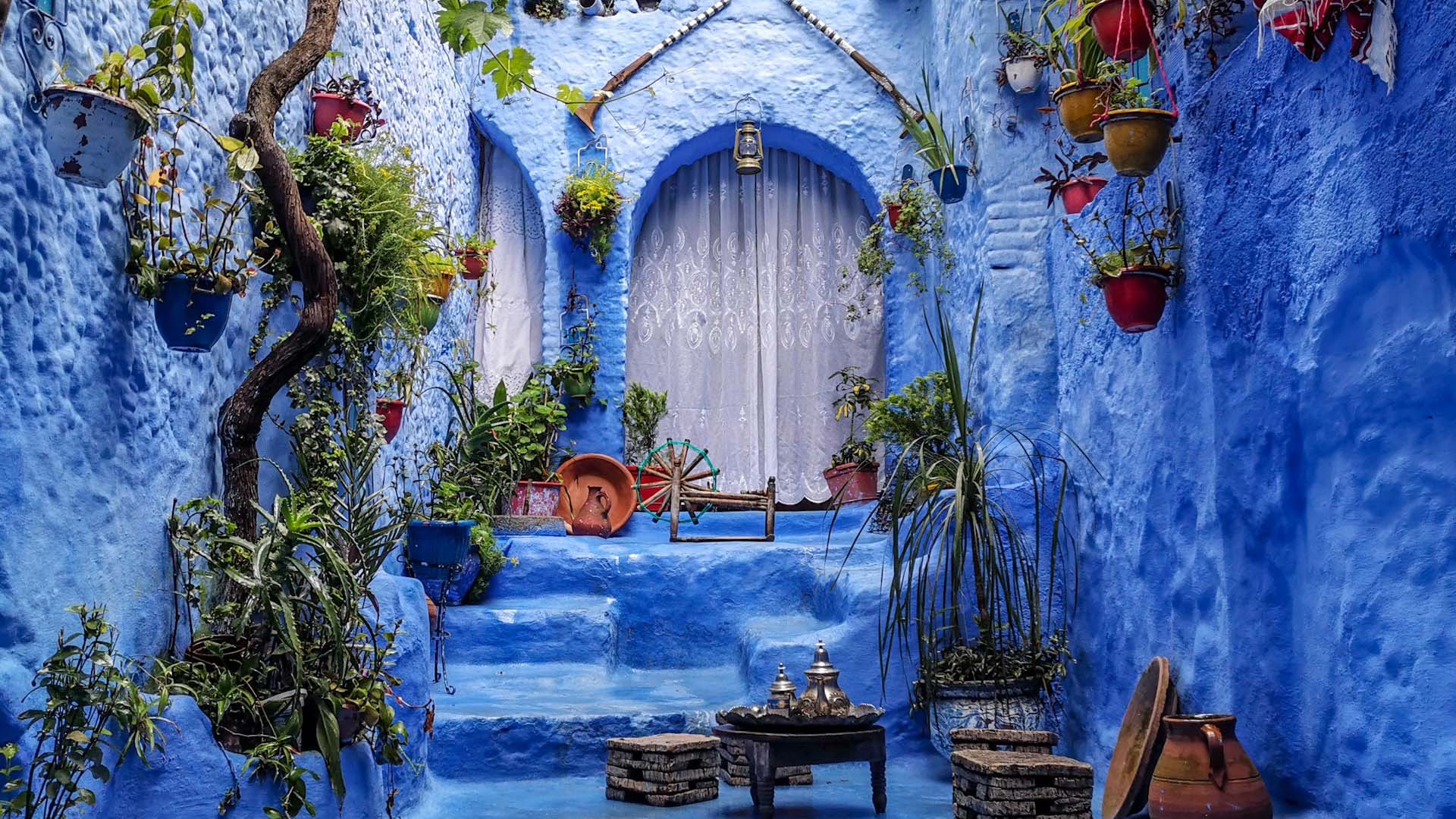
Chefchaouen, or “The Blue City,” is famous for its blue-painted buildings / Credit: Kyriacos Georgiou
Top Experiences Beyond the Four Imperial Cities
While the imperial cities of Morocco are certainly highlights of any visit, the country offers a wealth of experiences that showcase its diverse landscapes and rich cultural heritage. Here are some must-visit destinations beyond Fes, Marrakech, Meknes, and Rabat.
Chefchaouen: The Blue City
Nestled in the Rif Mountains, Chefchaouen is famous for its stunning blue-painted streets and buildings. This picturesque town exudes a laid-back vibe, making it a perfect spot to relax. Visitors can wander through the charming medina, shop for local crafts, and savour traditional Moroccan cuisine. Don’t miss the chance to hike to the nearby Spanish Mosque for breathtaking views of the town and surrounding mountains, especially at sunset when the city glows in shades of blue and orange.
The Sahara Desert: A Sea of Sand
No trip to Morocco is complete without experiencing the Sahara Desert. Merzouga serves as the gateway for camel treks into the majestic dunes of Erg Chebbi. Spend a night in a Berber camp beneath the stars, indulge in delicious Moroccan tagine, and enjoy stories and music around the campfire. For a thrill, try sandboarding down the towering dunes for a unique way to take in this extraordinary landscape.
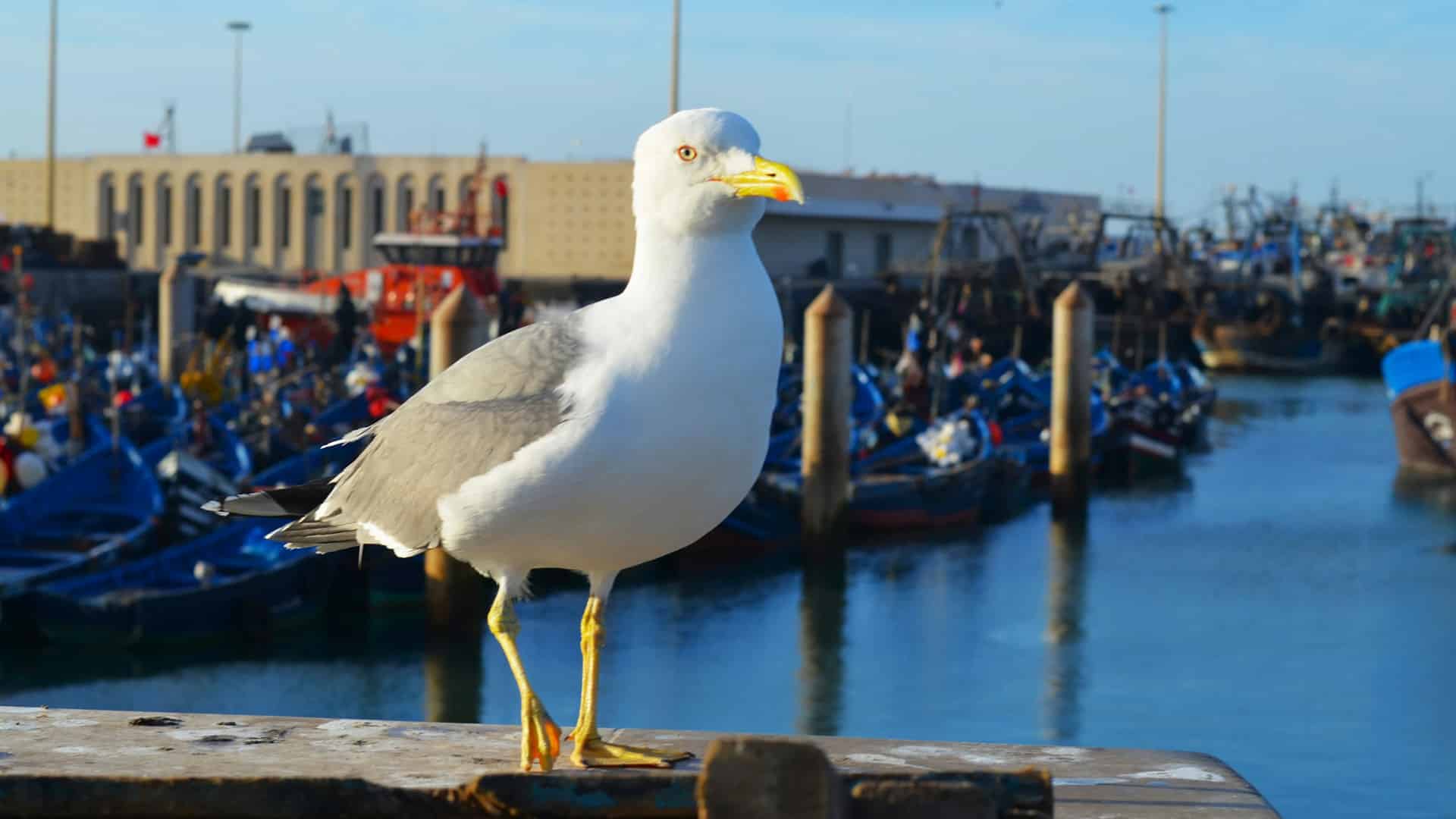
Essaouira, one of Morocco’s main fishing harbours / Credit: Olle August
Essaouira: Coastal Charm
Essaouira, located on the Atlantic coast, is a UNESCO World Heritage Site renowned for its well-preserved medina and vibrant arts scene. Stroll along the scenic ramparts, explore local art galleries, and feast on fresh seafood at the bustling port. The town’s easygoing atmosphere and sandy beaches make it ideal for windsurfing, kitesurfing, or simply unwinding by the sea. Be sure to check out the annual Gnaoua World Music Festival, which draws musicians and visitors from all over the globe.
Volubilis: Ancient Ruins
Visiting the ancient Roman ruins of Volubilis feels like a journey back in time. This UNESCO World Heritage site showcases the remnants of a once-thriving Roman city, complete with intricate mosaics, triumphal arches, and basilicas. Nestled among picturesque rolling hills and olive groves, exploring Volubilis provides a glimpse into Morocco’s rich history and the remarkable architectural prowess of the Romans.
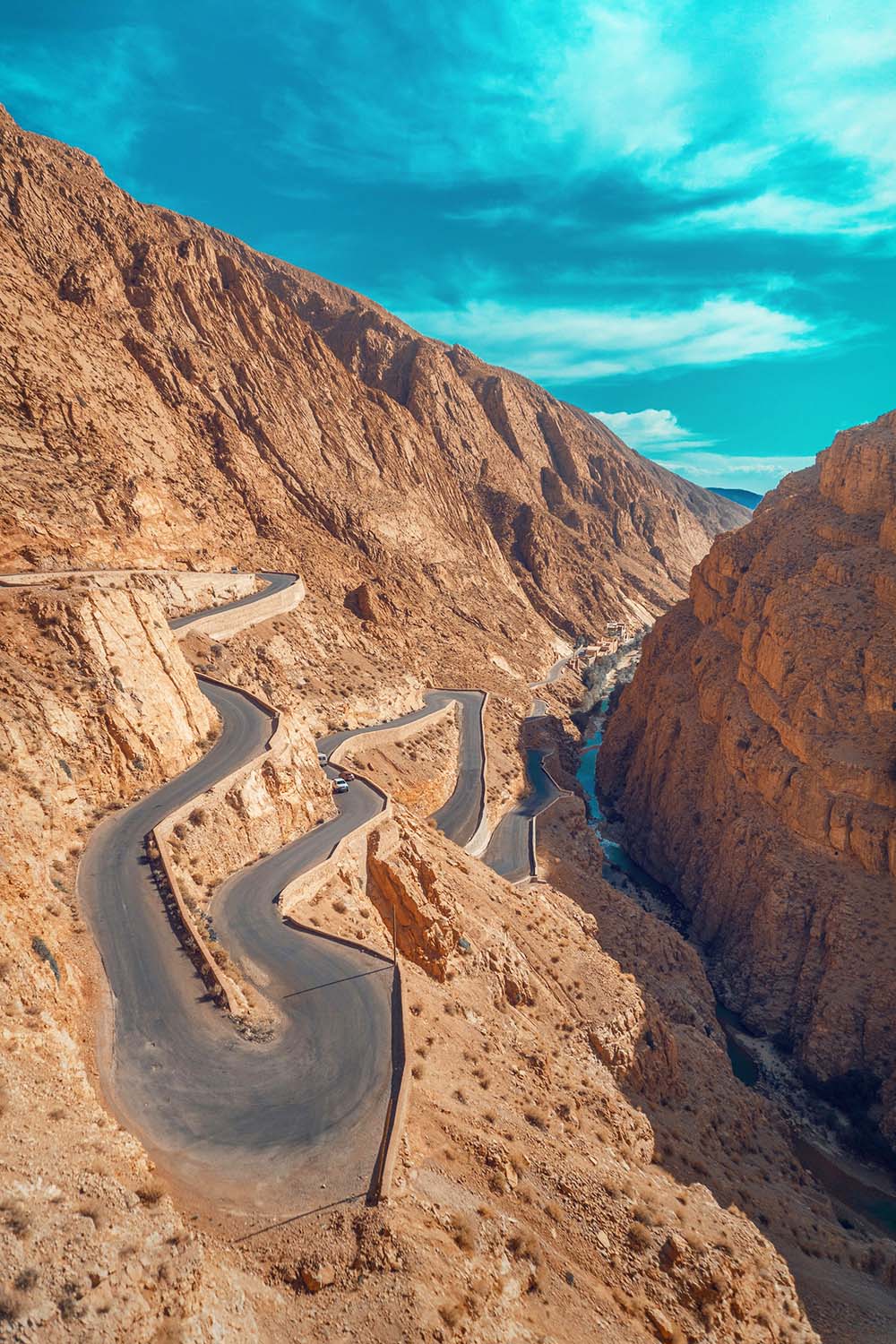
Dades Gorge, High Atlas Mountains /
Credit: Hassan Ouajbir

The Hassan II Mosque, one of the world’s largest, is an iconic landmark in Casablanca
The Atlas Mountains: A Nature Lover’s Paradise
The Atlas Mountains are a paradise for nature enthusiasts, offering stunning views and a variety of outdoor activities. The region is dotted with charming Berber villages, terraced fields, and towering peaks. Hiking to Toubkal, the highest mountain in North Africa, is a popular adventure. For thrill-seekers, mountain biking, rock climbing, and exploring scenic valleys like Imlil and Ait Bougmez are also great options. Engaging with the local Berber culture adds depth to your experience.
Ouarzazate: The Gateway to the Sahara
Known as the “Gateway to the Sahara,” Ouarzazate serves as a launch point for desert excursions and is home to the renowned Atlas Film Studios, where many blockbuster films have been produced. Visitors can take guided tours of the studios and explore Aït Benhaddou, an ancient kasbah featured in numerous films and recognized as a UNESCO World Heritage Site. The breathtaking landscapes surrounding Ouarzazate offer fantastic photo opportunities and highlight Morocco’s cinematic legacy.
Enchanting Casablanca: The Heart of Morocco
Casablanca, the economic heart of Morocco, is a vibrant city where modernity intertwines with history. It’s renowned for its stunning architecture, including the grand Hassan II Mosque, one of the largest in the world. The city centre boasts numerous Art Deco buildings from the French colonial era. The lively medina provides an energetic atmosphere, while the nearby Arab League Park offers a serene 30-acre escape with walking paths and lush green spaces, showcasing Morocco’s rich heritage alongside its contemporary influences.
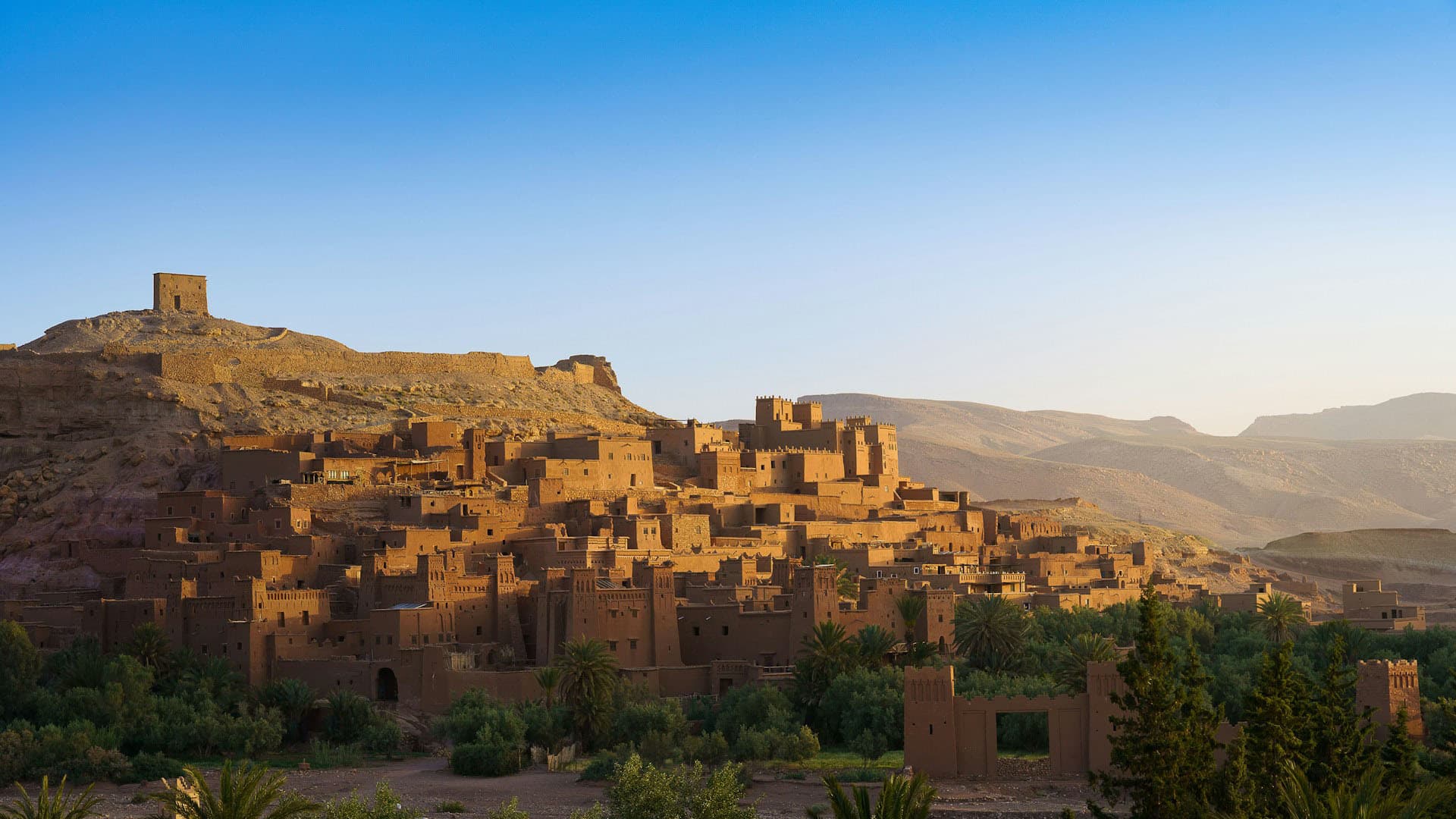
The fortified town of Ait Benhaddou on the edge of the Sahara Desert
Suggested Itineraries for Morocco
Morocco offers a treasure trove of itineraries that promise authentic experiences. With its historic cities, stunning landscapes, and vibrant culture, the country invites exploration. Whether you’re looking for adventure, relaxation, or cultural immersion, a trip to Morocco is sure to create unforgettable memories.
The country caters to a wide range of travellers, offering options like women’s-only tours from Intrepid Travel, luxurious getaways with Abercrombie & Kent, and exciting adventures through G Adventures. The women’s tour features visits to the bustling markets of Marrakech, indulgent spa treatments, and opportunities to connect with local women artisans. Abercrombie & Kent provides a taste of luxury with upscale accommodations, guided tours, and unique culinary experiences showcasing the flavors of Moroccan cuisine. Meanwhile, G Adventures offers thrilling activities such as hiking in the Atlas Mountains and camel rides across the Sahara, all while highlighting Morocco’s breathtaking scenery and rich cultural heritage. Each of these options beautifully showcases Morocco’s allure, fostering meaningful connections and lasting memories.
For a personalized travel experience, consider reaching out to a destination management company that specializes in Morocco. For further details about what Morocco has to offer, contact the Moroccan National Tourist Office.
